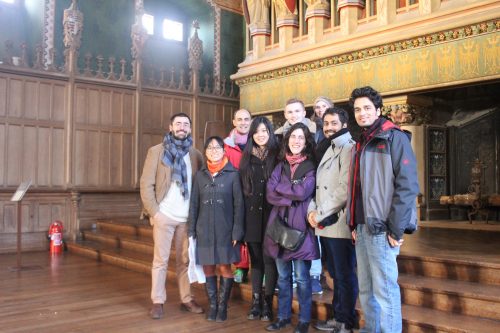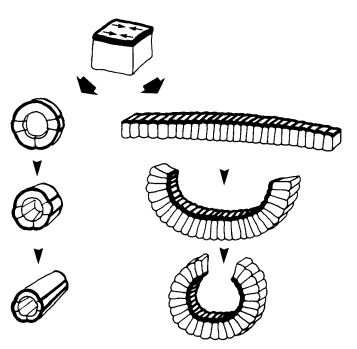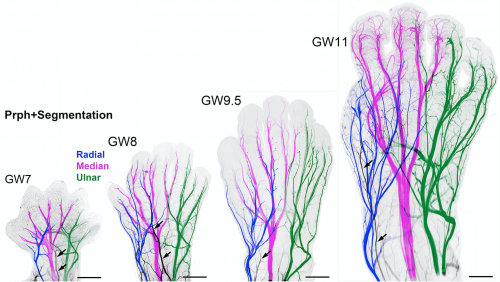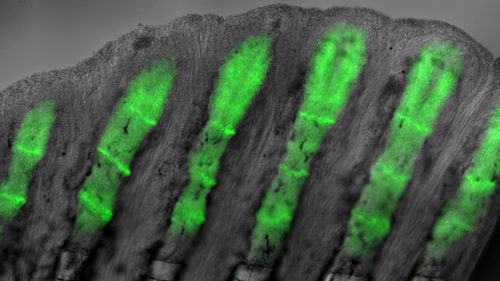March in preprints
Posted by the Node, on 6 April 2017
Our latest monthly trawl for developmental biology (and other cool) preprints. See June’s introductory post for background, and let us know if we missed anything
March was (yet) another bumper month for life sciences preprints. A glance at some of the names of last authors – Daniel St. Johnston, Denise Montell, Dennis Duboule, Roberto Mayor, Fiona Watt – shows that preprints are being embraced by established as well as early career scientists. The content itself covers every base in developmental biology, as well as a lot of exciting cell biology and modelling relevant for development, and an acronym-rich list of tools and resources.
Live 3D tracking of root development from Daniel von Wangenheim and colleagues’ preprint
The preprints were hosted predominantly on bioRxiv, though we also found a handful on arXiv and PeerJ.
Use these links to get to the section you want –
Developmental biology
| Stem cells, regeneration & disease modelling
Cell biology
Modelling
Evo-devo & evo
Tools & resources
Research practice
Why not…
Developmental biology
| Patterning & signalling
The Golgi matrix protein giantin is required for normal cilia function in zebrafish. Dylan JM Bergen, Nicola L Stevenson, Roderick J Skinner, David John Stephens, Chrissy L Hammond
Vegetally Localized Vrtn Functions As A Novel Repressor To Modulate bmp2b Transcription During Dorsoventral Patterning In Zebrafish. Ming Shao, Min Wang, Yi-Wen Ge, Yan-Jun Zhang, De-Li Shi
Conserved processes of metazoan whole-body regeneration identified in sea star larvae. Veronica Hinman, Greg Cary
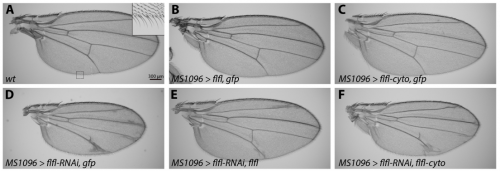
The Protein Phosphatase 4 complex promotes the Notch pathway and wingless transcription. Eric T. Hall, Tirthadipa Pradhan-Sundd, Faaria Samnani, Esther M. Verheyen
Localised Dynactin Protects Growing Microtubules To Deliver Oskar mRNA To The Posterior Cortex Of The Drosophila Oocyte. Ross Nieuwburg, Dmitry Nashchekin, Maximilian Jakobs, Andrew Carter, Philipp Khuc Trong, Raymond E Goldstein, Daniel St Johnston
Intercellular calcium waves are controlled by morphogen signaling during organ development. Qinfeng Wu, Pavel Brodskiy, Cody Narciso, Megan Levis, Jianxu Chen, Peixian Liang, Ninfamaria Arredondo-Walsh, Danny Z Chen, Jeremiah James Zartman
A protein phosphatase network controls the temporal and spatial dynamics of differentiation commitment in human epidermis. Ajay Mishra, Angela Pisco, Benedicte Oules, Tony Ly, Kifayathullah Liakath-Ali, Gernot Walko, Priyalakshmi Viswanathan, Jagdeesh Nijjhar, Sara-Jane Dunn, Angus Lamond, Fiona Watt
Glycerophosphodiesterase GDE2 affects pancreas differentiation in zebrafish. Michiel van Veen, Jason van Pelt, Laurie A. Mans, Wouter H. Moolenaar, Anna-Pavlina Haramis
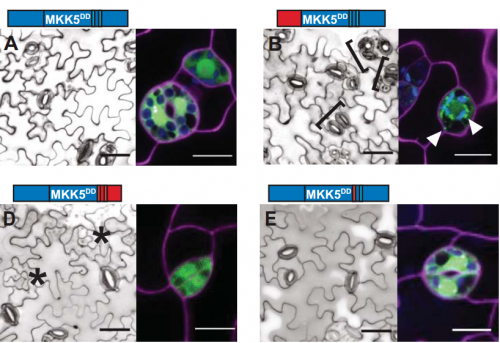
Dissection of MAPK signaling specificity through protein engineering in a developmental context. Diego L Wengier, Gregory R Lampard, Dominique C Bergmann
Regulation of intercellular TARGET OF MONOPTEROS 7 protein transport in the Arabidopsis root. Kuan-Ju Lu, Bert De Rybel, Hilda van Mourik, Dolf Weijers
The Molecular Link Between Auxin And ROS-Mediated Polar Growth. Silvina Mangano, Silvina Paola Denita-Juarez, Hee-Seung Choi, Eliana Marzol, Youra Hwang, Philippe Ranocha, Silvia M Velasquez, Jorge P Muschietti, Christophe Dunand, Hyung-Taeg Cho, Jose M Estevez
The Maternal Environment Interacts With Genetic Variation In Regulating Seed Dormancy In Arabidopsis thaliana. Envel Kerdaffrec, Magnus Nordborg
A DNA demethylase overexpression promotes early apical bud maturation in poplar through the biosynthesis and accumulation of flavonoids. Daniel Conde, Alicia Moreno-Cortes, Christopher Dervinis, Jose Manuel Ramos-Sanchez, Matias Kirst, Mariano Perales, Pablo Gonzalez-Melendi, Isabel Allona
Rahu Is A Mutant Allele Of Dnmt3c, Encoding A DNA Methyltransferase Required For Meiosis And Transposon Repression In The Mouse Male Germline. Devanshi Jain, Cem Meydan, Julian Lange, Corentin Claeys Bouuaert, Christopher E Mason, Kathryn V Anderson, Scott Keeney
The zebrafish as a model system for analyzing mammalian and native α-crystallin promoter function. Mason Posner, Kelly Murray, Hayden Eighinger, Amy Drossman, Zachary Haley, Justin Nussbaum, Larry L David, Kirsten J Lampi
| Morphogenesis & mechanics
Concerted action of neuroepithelial basal shrinkage and active epithelial migration ensures efficient optic cup morphogenesis. Jaydeep Sidhaye, Caren Norden
Cadherin Fat2 directs cellular mechanics to promote epithelial rotation. Ivana Viktorinova, Ian Henry, Pavel Tomancak
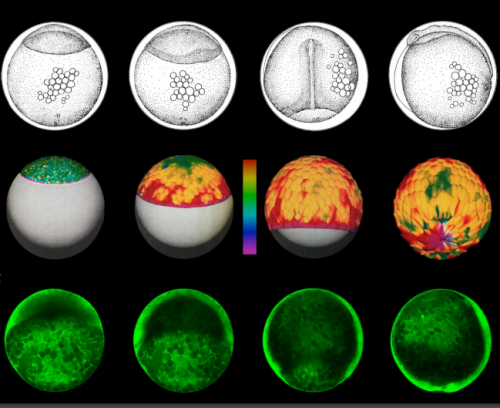
Contractility, Differential Tension and Membrane Removal direct zebrafish Epiboly Biomechanics. Maria Marsal, Enrique Martin-Blanco
Wnt Signalling Controls the Response to Mechanical Loading during Zebrafish Joint Development. Lucy H Brunt, Katie Begg, Erika Kague, Stephen Cross, Chrissy L Hammond
Connexin43 controls N-cadherin transcription during collective cell migration. Maria Kotini, Elias Barriga, Jonathan Leslie, Marc Gentzel, Alexandra Schambony, Roberto Mayor
Ultradian Oscillation of Growth Reveals Regulatory Mechanism in the Straightening Movement of Wheat Coleoptile. Renaud Bastien, Stephane Douady, Bruno Moulia
Increased pericarp cell length underlies a major QTL for grain weight in hexaploid wheat. Jemima Brinton, James Simmonds, Francesca Minter, Michelle Leverington-Waite, John Snape, Cristobal Uauy
The microprotein Minion controls cell fusion and muscle formation. Qiao Zhang, Ajay Vashisht, Jason O’Rourke, Stephane Y Corbel, Rita Moran, Angelica Romero, Loren Miraglia, Jia Zhang, Eric Durrant, Christian Schmedt, Srinath C Sampath,
| Genes & genomes
The Drosophila Embryo at Single Cell Transcriptome Resolution. Nikos Karaiskos, Philipp Wahle, Jonathan Alles, Anastasiya Boltengagen, Salah Ayoub, Claudia Kipar, Christine Kocks, Nikolaus Rajewsky, Robert P Zinzen
C. elegans exhibits coordinated oscillation in gene expression during development. Luke A. D. Hutchison, Bonnie Berger, Isaac Kohane
Embryonic loss of human females with partial trisomy 19 identifies region critical for the single active X. Barbara R Migeon, Michael A Beer, Hans T Bjornsson

Regulatory remodeling in the allo-tetraploid frog Xenopus laevis. Dei M. Elurbe, Sarita S. Paranjpe, Georgios Georgiou, Ila van Kruijsbergen, Ozren Bogdanovic, Romain Gibeaux, Rebecca Heald, Ryan Lister, Martijn A. Huynen, Simon J. van Heeringen, Gert Jan C. Veenstra
Davide Cacchiarelli, Xiaojie Qiu, Sanjay Srivatsan, Michael Ziller, Eliah Overbey, Jonna Grimsby, Prapti Pokharel, Ken Livak, Shuqiang Li, Alex Meissner, Tarjei Mikkelsen, John Rinn, Cole Trapnell
Flipping between Polycomb repressed and active transcriptional states introduces noise in gene expression. Gozde Kar, Jong Kyoung Kim, Aleksandra A. Kolodziejczyk, Kedar Nath Natarajan, Elena Torlai Triglia, Borbala Mifsud, Sarah Elderkin, John C. Marioni, Ana Pombo, Sarah A. Teichmann
LARGE-SCALE GENOMIC REORGANIZATIONS OF TOPOLOGICAL DOMAINS (TADs) AT THE HoxD LOCUS. Pierre J Fabre, Marion Leleu, Benjamin H Mormann, Lucille Delisle, Daan Noordermeer, Leonardo Beccari, Denis Duboule
Control of Hox transcription factor concentration and cell-to-cell variability by an auto-regulatory switch. Dimitrios K Papadopoulos, Kassiani Skouloudaki, Ylva Engstrom, Lars Terenius, Rudolf Rigler, Vladana Vukojevic, Pavel Tomancak
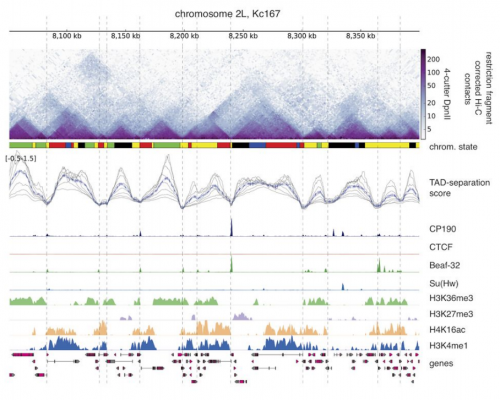
High-resolution TADs reveal DNA sequences underlying genome organization in flies. Fidel Ramirez, Vivek Bhardwaj, Jose Villaveces, Laura Arrigoni, Bjoern A Gruening, Kin Chung Lam, Bianca Habermann, Asifa Akhtar, Thomas Manke
Expression profiling reveals novel role of Hunchback in retinal glia cell development and blood-brain barrier integrity. Montserrat Torres-Oliva, Julia Schneider, Gordon Wiegleb, Felix Kaufholz, Nico Posnien
| Stem cells, regeneration & disease modelling
Stem cell niche signals Wnt, Hedgehog, and Notch distinctively regulate Drosophila follicle precursor cell differentiation. Wei Dai, Amy Peterson, Thomas Kenney, Denise J Montell
Steroid Hormone Induction Of Temporal Gene Expression In Drosophila Brain Neuroblasts Generates Neuronal And Glial Diversity. Mubarak Hussain Syed, Brandon Mark, Chris Q Doe
Stem cell intrinsic, Seven-up-triggered temporal factor gradients diversify intermediate neural progenitors. Qingzhong Ren, Ching-Po Yang, Zhiyong Liu, Ken Sugino, Kent Mok, Yisheng He, Tzumin Lee
ES cell derived neural progenitors improves visual functions in retinal ganglion cells – depleted mouse models. Divya Mundackal Sivaraman, Rasheed Vazhanthodi Abdul, Tiffany Schmidt, Lalitha Soundararajan, Samer Hattar, Jackson James
Preservation of Chromatin Organization after Acute Loss of CTCF in Mouse Embryonic Stem Cells. Naoki Kubo, Haruhiko Ishii, David Gorkin, Franz Meitinger, Xiong Xiong, Rongxin Fang, Tristin Liu, Zhen Ye, Bin Li, Jesse Dixon, Arshad Desai, Huimin Zhao, Bing Ren
Epigenetic analyses of the planarian genome reveals conservation of bivalent promoters in animal stem cells. Damian Kao, Yuliana Mihaylova, Samantha Hughes, Alvina Lai, Aziz Aboobaker
Polymorphic Dynamics of Ribosomal Proteins’ Gene Expression during Induced Pluripotency. Prashanth Kumar Guthikonda, Sumitha Prameela Bharathan, Janakiram Rayabaram, Sailu Yellaboina, Shaji R Velayudhan, Sreenivasulu Kurukuti
Can Human Embryonic Stem Cell-Derived Stromal Cells Serve A Starting Material For Myoblasts? Yu Ando, Marie Saito, Masakazu Machida, Chikako Noro, Masataka Takahashi, Masashi Toyoda, Akihiro Umezawa
Migration Of Human Mesenchymal Stem Cells Stimulated With Pulsed Electric Field And The Dynamics Of The Cell Surface Glycosylation. Katarzyna Jezierska-Woźniak, Seweryn Lipiński, Łukasz Grabarczyk, Monika Barczewska, Aleksandra Habich, Joanna Wojtkiewicz, Wojciech Maksymowicz
Single-cell RNA-Sequencing uncovers transcriptional states and fate decisions in haematopoiesis. Emmanouil I Athanasiadis, Helena Andres, Jan G Botthof, Lauren Ferreira, Pietro Lio, Ana Cvejic
De novo mutations in regulatory elements cause neurodevelopmental disorders. Patrick J Short, Jeremy F McRae, Giuseppe Gallone, Alejandro Sifrim, Hyejung Won, Daniel H Geschwind, Caroline F Wright, Helen V Firth, David R FitzPatrick, Jeffrey C Barrett, Matthew E Hurles
Optimising 3D scaffold for otic neural progenitor differentiation. Kamolchanok Ngamkham, Marcelo N Rivolta, Giuseppe Battaglia
Information Theory and Stem Cell Biology. Rosanna C G Smith, Ben D MacArthur
Generation Of A Double Binary Transgenic Zebrafish Model To Study Myeloid Gene Regulation In Response To Melanocyte Transformation. Amy Kenyon, Daria Gavriouchkina, Giorgio Napolitani, Vincenzo Cerundolo, Tatjana Sauka-Spengler
Dystroglycan Maintains Inner Limiting Membrane Integrity To Coordinate Retinal Development. Reena Clements, Rolf Turk, Kevin Campbell, Kevin M Wright
Toxicity Of Chlordane At Early Developmental Stage Of Zebrafish. Jingxuan Xiong
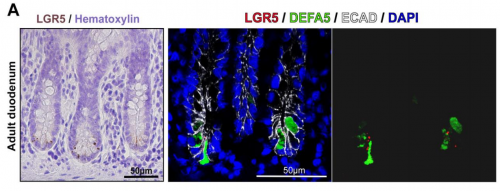
Identification, Isolation, and Characterization of Human LGR5-positive Colon Adenoma Cells. Michael K Dame, Durga Attili, Shannon D McClintock, Priya H Dedhia, Peter Ouilette, Olaf Hardt, Alana M Chin, Xiang Xue, Julie Laliberte, Erica L Katz, Gina M Newsome, David Hill, Alyssa Miller, David Agorku, Christopher H Altheim, Andreas Bosio, Becky Simon, Linda C Samuelson, Jay A Stoerker, Henry D Appelman, James Varani, Max S Wicha, Dean E Brenner, Yatrik M Shah, Jason R Spence, Justin A Colacino
Short term changes in the proteome of human cerebral organoids induced by 5-methoxy-N,N-dimethyltryptamine. Vanja Dakic, Juliana M Nascimento, Rafaela C Sartore, Renata de Moraes Maciel, Draulio B de Araujo, Sidarta Ribeiro, Daniel Martins-de-Souza, Stevens K Rehen
Cell biology
Dynamics Of Dynein At Microtubule Plus-Ends And The Cortex During The Division Of The C. elegans Zygote. Ruddi Rodriguez Garcia, Laurent Chesneau, Sylvain Pastezeur, Julien Roul, Marc Tramier, Jacques Pecreaux
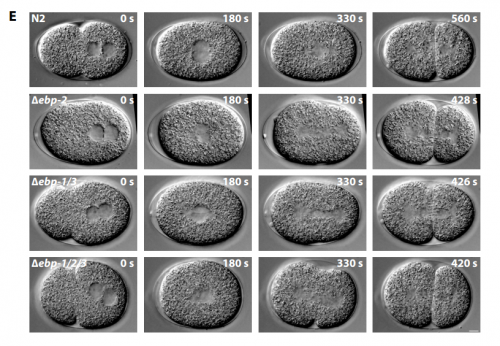
Normal Spindle Positioning In The Absence Of EBPs And Dynein Plus-End Tracking In C. elegans. Ruben Schmidt, Anna A.A. Akhmanova, Sander S.J.L. van den Heuvel
Force-Dependent Binding Of Vinculin To α-Catenin Regulates Cell-Cell Contacts Stability And Collective Cell Behavior. Rima Seddiki, Pierre-Olivier Strale, Gregoire Peyret, Mingxi Yao, Jie Yan, Benoit Ladoux, Rene-Marc Mege
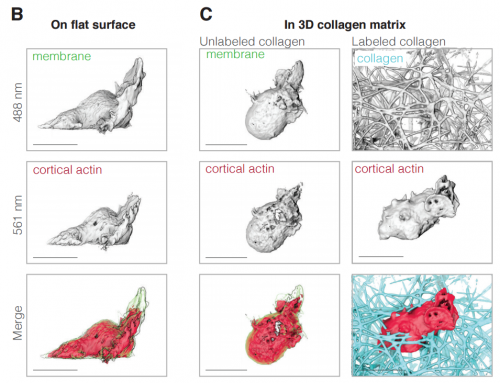
Three-dimensional actin-based protrusions of migrating neutrophils are intrinsically lamellar and facilitate direction changes. Lillian K Fritz-Laylin, Megan Riel-Mehan, Bi-Chang Chen, Samuel J Lord, Thomas D Goddard, Thomas E Ferrin, Graham Johnson, Eric Betzig, R. Dyche Mullins
Direct visualization of how Actin Depolymerizing Factor’s filament severing and depolymerization synergizes with Capping Protein’s monomer funneling to promote rapid polarized growth of actin filaments. Shashank Shekhar, Marie-France Carlier
Calcium oscillations in wounded fibroblast monolayers are spatially regulated through substrate mechanics. Josephine Lembong, Benedikt Sabass, Howard A. Stone
Size uniformity of animal cells is actively maintained by a p38 MAPK-dependent regulation of G1-length. Shixuan Liu, Miriam Bracha Ginzberg, Nish Patel, Marc Hild, Bosco Leung, Yen-Chi Chen, Zhengda Li, Nancy Chang, Shulamit Diena, Yuan Wang, William Trimble, Larry Wasserman, Jeremy Jenkins, Marc W Kirschner, Ran Kafri
Disease-Associated Mutations In Human BICD2 Hyperactivate Motility Of Dynein-Dynactin. Walter Huynh, Ron Vale
Drosophila Short stop as a paradigm for the role and regulation of spectraplakins. Andre Voelzmann, Yu-Ting Liew, Yue Qu, Ines Hahn, Cristina Melero, Natalia Sanchez-Soriano, Andreas Prokop
Emergent versus Individual-based Multicellular Chemotaxis. Julien Varennes, Sean Fancher, Bumsoo Han, Andrew Mugler
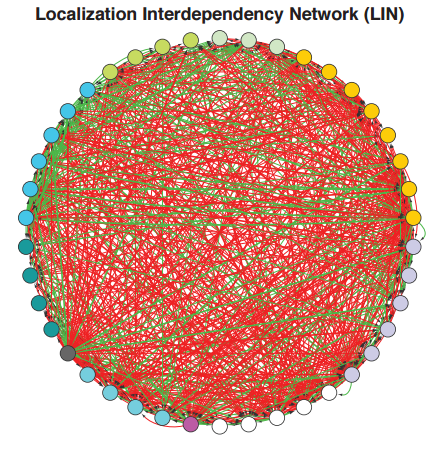
Reconstructing regulatory pathways by systematically mapping protein localization interdependency networks. James Dodgson, Anatole Chessel, Federico Vaggi, Marco Giordan, Miki Yamamoto, Kunio Arai, Marisa Madrid, Marco Geymonat, Juan Francisco Abenza, Jose Cansado, Masamitsu Sato, Attila Csikasz-Nagy, Rafael E Carazo-Salas
Reconciling Conflicting Models for Global Control of Cell-Cycle Transcription. Chun-Yi Cho, Francis C. Motta, Christina M. Kelliher, Anastasia Deckard, Steven B. Haase
Stacks off tracks: A role for the golgin AtCASP in plant endoplasmic reticulum – Golgi apparatus tethering. Anne Osterrieder, Chris Hawes, Imogen A Sparkes, Stanley Botchway, Andy Ward, Tijs Ketelaar, Norbert De Ruijter
Genome-wide phenotypic analysis of growth, cell morphogenesis and cell cycle events in Escherichia coli. Manuel Campos, Genevieve S Dobihal,Christine Jacobs-Wagner
Cell cycle entry triggers a switch between two modes of Cdc42 activation during yeast polarization. Kristen Witte, Devin Strickland, Michael Glotzer
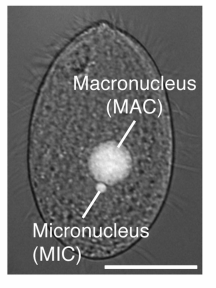
Compositionally distinct nuclear pore complexes of functionally distinct dimorphic nuclei in ciliate Tetrahymena. Masaaki Iwamoto, Hiroko Osakada, Chie Mori, Yasuhiro Fukuda, Koji Nagao, Chikashi Obuse, Yasushi Hiraoka, Tokuko Haraguchi
Modelling
Continuum approximations for lattice-free multi-species models of collective cell migration. Oleksii Matsiaka, Catherine Penington, Ruth E Baker, Matthew J Simpson
Multi-scale computational study of the mechanical regulation of cell mitotic rounding in epithelia. Ali Nematbakhsh, Wenzhao Sun, Pavel A Brodskiy, Aboutaleb Amiri, Cody Narciso, Zhiliang Xu, Jeremiah J Zartman, Mark S Alber
Epithelial-mesenchymal plasticity: How have quantitative mathematical models helped improve our understanding? Mohit Kumar Jolly, Satyendra C Tripathi, Jason A Somarelli, Samir M Hanash, Herbert Levine
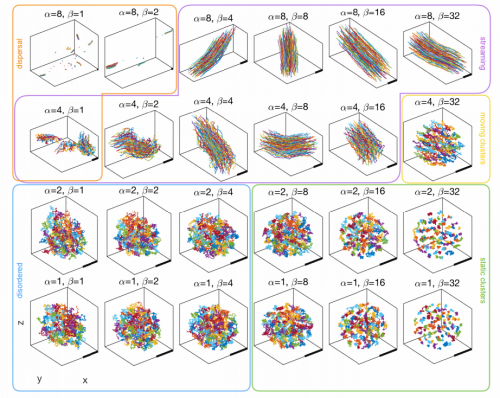
Semblance Of Heterogeneity In Collective Cell Migration. Linus J Schumacher, Philip K Maini, Ruth E Baker
Quantitative hybrid modeling reveals predictable mechanical stress response of growing tumor spheroids. Paul Van Liedekerke, Johannes Neistch, Tim Johann, Kévin Alessandri, Pierre Nassoy, Dirk Drasdo
An Algorithm for Cellular Reprogramming. Scott Ronquist, Geoff Patterson, Markus Brown, Haiming Chen, Anthony Bloch, Lindsey Muir, Roger Brockett, Indika Rajapakse
Spot dynamics in a reaction-diffusion model of plant root hair initiation. Daniele Avitabile, Victor F Brena-Medina, Micheal J Ward
A mechanistic model for the evolution of multicellularity. André Amado, Carlos Batista, Paulo R. A. Campos
MODELING SIGNALING-DEPENDENT PLURIPOTENT CELL STATES WITH BOOLEAN LOGIC CAN PREDICT CELL FATE TRANSITIONS. Ayako Yachie-Kinoshita, Kento Onishi, Joel Ostblom, Eszter Posfai, Janet Rossant, Peter W Zandstra
Evo-devo & evo
Neuronal Patterning Of The Tubular Collar Cord Is Highly Conserved Among Enteropneusts But Dissimilar To The Chordate Neural Tube. Sabrina Kaul, Makoto Urata, Daniela Praher, Andreas Wanninger
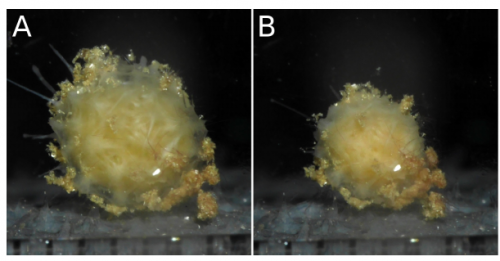
The Genome Of The Contractile Demosponge Tethya wilhelma And The Evolution Of Metazoan Neural Signalling Pathways. Warren R Francis, Michael Eitel, Sergio Vargas R., Marcin Adamski, Steven HD Haddock, Stefan Krebs, Helmut Blum, Dirk Erpenbeck, Gert Wörheide
A maternal-effect genetic incompatibility in Caenorhabditis elegans. Eyal Ben-David, Alejandro Burga, Leonid Kruglyak
Contribution Of Trans Regulatory eQTL To Cryptic Genetic Variation In C. elegans. Basten Snoek, Mark Sterken, Roel Bevers, Rita Volkers, Arjen van’t Hof, Rachel Brenchley, Joost Riksen, Andrew Cossins, Jan Kammenga
Polygenicity And Epistasis Underlie Fitness-Proximal Traits In The Caenorhabditis elegans Multiparental Experimental Evolution (CeMEE) Panel. Luke M Noble, Ivo Chelo, Thiago Guzella, Bruno Afonso, David D Riccardi, Patrick Ammerman, Adel Dayarian, Sara Carvalho, Anna Crist, Ania Pino-Querido, Boris Shraiman, Matthew V Rockman, Henrique Teotónio
Diverse genome organization following 13 independent mesopolyploid events in Brassicaceae contrasts with convergent patterns of gene retention. Terezie Mandakova, Zheng Li, Michael Barker, Martin Lysak
Ambient temperature and genotype differentially affect developmental and phenotypic plasticity in Arabidopsis thaliana. Carla Ibanez, Yvonne Poeschl, Tom Peterson, Julia Bellstaedt, Kathrin Denk, Andreas Gogol-Doering, Marcel Quint, Carolin Delker
Selective sweep analysis using village dogs highlights the pivotal role of the neural crest in dog domestication. Amanda L. Pendleton, Feichen Shen, Angela M. Taravella, Sarah Emery, Krishna R. Veeramah, Adam R. Boyko, Jeffrey M. Kidd
Tools & resources
The 100 Euro Lab: A 3-D Printable Open Source Platform For Fluorescence Microscopy, Optogenetics And Accurate Temperature Control During Behaviour Of Zebrafish, Drosophila And C. elegans. Andre Maia Chagas, Lucia Prieto Godino, Aristides B Arrenberg, Tom Baden
Live Tracking Of Moving Samples In Confocal Microscopy For Vertically Grown Plant Roots. Daniel von Wangenheim, Robert Hauschild, Matyas Fendrych, Vanessa Barone, Jiri Friml
Nanoscale Manipulation Of Membrane Curvature For Probing Endocytosis In Live Cells. Wenting Zhao, Lindsey Hanson, Hsin-Ya Lou, Matthew Akamatsu, Praveen Chowdary, Francesca Santoro, Jessica Marks, Alexandre Grassart, David Drubin, Yi Cui, Bianxiao Cui
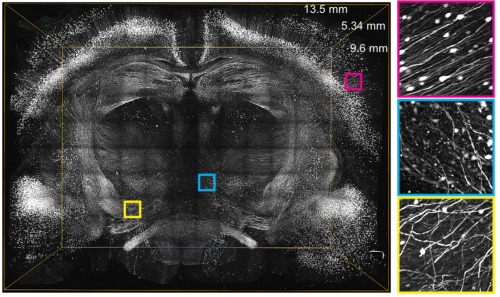
Light Sheet Theta Microscopy for High-resolution Quantitative Imaging of Large Biological Systems. Bianca Migliori, Malika S Datta, Mehmet C Apak, Raju Tomer
Distinguishing Signal From Autofluorescence In Cryogenic Correlated Light And Electron Microscopy Of Mammalian Cells. Stephen D Carter, Shrawan K Mageswaran, Zachary J Farino, Joao I Mamede, Catherine M Oikonomou, Thomas J Hope, Zachary Freyberg, Grant J Jensen
OME Files – An open source reference library for the OME-XML metadata model and the OME-TIFF file format. Roger Leigh, David Gault, Melissa Linkert, Jean-Marie Burel, Josh Moore, Sebastien Besson, Jason R Swedlow
microCT-Based Skeletal Phenomics in Zebrafish Reveals Virtues of Deep Phenotyping at the Whole-Organism Scale. Matthew Hur, Charlotte A Gistelinck, Philippe Huber, Jane Lee, Marjorie H Thompson, Adrian T Monstad-Rios, Claire J Watson, Sarah K McMenamin, Andy Willaert, David M Parichy, Paul Coucke, Ronald Y Kwon
Coupling optogenetics and light-sheet microscopy to study signal transduction in vivo. Prameet Kaur, Timothy E. Saunders, Nicholas Stanislaw Tolwinski
xCell: Digitally portraying the tissue cellular heterogeneity landscape. Dvir Aran, Zicheng Hu, Atul J Butte
ChromoTrace: Reconstruction of 3D Chromosome Configurations by Super-Resolution Microscopy. Sandro Morganella, Oeyvind Oedegaard, Stephanie Alexander, Jonas Ries, Tomas Fitzgerald, Jan Ellenberg, Ewan Birney
LncATLAS database for subcellular localisation of long noncoding RNAs. David Mas-Ponte, Joana Carlevaro-Fita, Emilio Palumbo, Toni Hermoso, Roderic Guigo, Rory Johnson
How well do RNA-Seq differential gene expression tools perform in a eukaryote with a complex transcriptome? Kimon Froussios, Nicholas J Schurch, Katarzyna Mackinnon, Marek Gierlinski, Céline Duc, Gordon G Simpson, Geoffrey J Barton
Multiplexing droplet-based single cell RNA-sequencing using natural genetic barcodes. Hyun Min Kang, Meena Subramaniam, Sasha Targ, Michelle Nguyen, Lenka Maliskova, Eunice Wan, Simon Wong, Lauren Byrnes, Cristina Lanata, Rachel Gate, Sara Mostafavi, Alexander Marson, Noah Zaitlen, Lindsey A Criswell, Jimmie Ye
Rapid Sequential In Situ Multiplexing With DNA-Exchange-Imaging. Yu Wang, Johannes B Woehrstein, Noah Donoghue, Mingjie Dai, Maier S Avendano, Ron C.J. Schackmann, Shan Shan Wang, Paul W Tillberg, Demian Park, Sylvain W Lapan, Edward S Boyden, Joan S Brugge, Pascal S Kaeser, George M Church, Sarit S Agasti, Ralf Jungmann, Peng Yin
Decoding directional genetic dependencies through orthogonal CRISPR/Cas screens. Michael Boettcher, Ruilin Tian, James Blau, Evan Markegard, David Wu, Anne Biton, Noah Zaitlen, Frank McCormick, Martin Kampmann, Michael T McManus
CRISPR/Cas9 screening using unique molecular identifiers. Bernhard Schmierer, Sandeep Kumar Botla, Jilin Zhang, Mikko Turunen, Teemu Kivioja, Jussi Taipale
shinyheatmap: ultra fast low memory heatmap software for big data genomics. Bohdan B Khomtchouk, James R Hennessy, Claes Wahlestedt
DroNc-Seq: Deciphering cell types in human archived brain tissues by massively-parallel single nucleus RNA-seq. Naomi Habib, Anindita Basu, Inbal Avraham-Davidi, Tyler Burks, Sourav R Choudhury, Francois Aguet, Ellen Gelfand, Kristin Ardlie, David A Weitz, Orit Rozenblatt-Rosen, Feng Zhang, Aviv Regev
RETA: An R Package For Whole Exome And Targeted Region Sequencing Data Analysis. Mengbiao Guo, Jing Yang, Yu-Lung Lau, Wanling Yang
SUPERmerge: ChIP-Seq Coverage Island Analysis Algorithm For Broad Histone Marks. Bohdan B Khomtchouk, Derek J Van Booven, Claes Wahlestedt
Multiplexed sgRNA Expression Allows Versatile Single Non-repetitive DNA Labeling and Endogenous Gene Regulation. Shipeng Shao, Lei Chang, Yuao Sun, Yingping Hou, Xiaoying Fan, Yujie Sun
Systematic gene tagging using CRISPR/Cas9 in human stem cells to illuminate cell organization. Brock Roberts, Amanda Haupt, Andrew Tucker, Tanya Grancharova, Joy Arakaki, Margaret A. Fuqua, Angelique Nelson, Caroline Hookway, Susan A. Ludmann, Irina M. Mueller, Ruian Yang, Alan R. Horwitz, Susanne M. Rafelski, Ruwanthi N. Gunawardane
A toolbox of immunoprecipitation-grade monoclonal antibodies against human transcription factors. Anand Venkataraman, Kun Yang, Jose Irrizary, Mark Mackiewicz, Paolo Mita, Zheng Kuang, Lin Xue, Devlina Ghosh, Shuang Liu, Pedro Ramos, Shaohui Hu, Diane Bayron, Sarah Keegan, Richard Saul, Simona Colantonio, Hongyan Zhang, Florencia Pauli Behn, Guang Song, Edisa Albino, Lillyan Asencio, Leonardo Ramos, Luvir Lugo, Gloriner Morell, Javier Rivera, Kimberly Ruiz, Ruth Almodovar, Luis Nazario, Keven Murphy, Ivan Vargas, Zully Rivera-Pacheco, Christian Rosa, Moises Vargas, Jessica McDade, Brian S Clark, Sooyeon Yoo, Seva G Khambadkone, Jimmy de Melo, Milanka Stevanovic, Lizhi Jiang, Yana Li, Wendy Y Yap, Brittany Jones, Atul Tandon, Elliot Campbell, Stephen Anderson, Richard M Myers, Jef D Boeke, David Fenyo, Gordon Whiteley, Joel S Bader, Daniel J Eichinger, Ignacio Pino, Heng Zhu, Seth Blackshaw
Mass-spectrometry of single mammalian cells quantifies proteome heterogeneity during cell differentiation. Bogdan Budnik, Ezra Levy, Nikolai Slavov
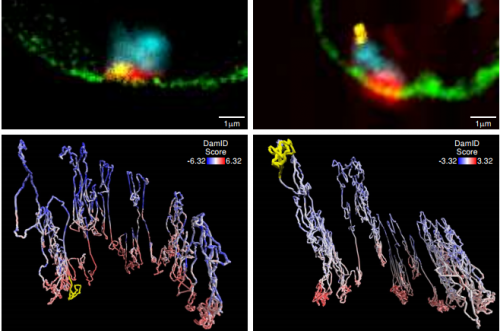
Chromosome Conformation Paints Reveal The Role Of Lamina Association In Genome Organization And Regulation. Teresa R Luperchio, Michael EG Sauria, Xianrong Wong, Marie-Cécile Gaillard, Peter Tsang, Katja Pekrun, Robert A Ach, N Alice Yamada, James Taylor, Karen Reddy
Large-scale simultaneous measurement of epitopes and transcriptomes in single cells.
Marlon Stoeckius, Christoph Hafemeister, William Stephenson, Brian Houck-Loomis, Harold Swerdlow, Rahul Satija, Peter Smibert
Patternize: An R Package For Quantifying Color Pattern Variation. Steven M. Van Belleghem, Riccardo Papa, Humberto Ortiz-Zuazaga, Frederik Hendrickx, Chris Jiggins, W. Owen McMillan, Brian Counterman
InterPred: A pipeline to identify and model protein-protein interactions. Claudio Mirabello, Bjorn Wallner
High fidelity hypothermic preservation of primary tissues in organ transplant preservative for single cell transcriptome analysis. Wanxin Wang, Lolita Penland, Ozgun Gokce, Derek Croote, Stephen R. Quake
Genotyping Of Zebrafish Embryos Fixed By Paraformaldehyde. Qilin Gu, Xiaojie Yang
Research practice
Amending Published Articles: Time To Rethink Retractions And Corrections?Virginia Barbour, Theodora Bloom, Jennifer Lin, Elizabeth Moylan
Preprinting Microbiology. Patrick D Schloss
Formatting Open Science: agilely creating multiple document formats for academic manuscripts with Pandoc Scholar. Albert Krewinkel, Robert Winkler
Why not…
Could Plants Be Sentient? Paco Calvo, Vaidurya Sahi, Anthony Trewavas


 (No Ratings Yet)
(No Ratings Yet)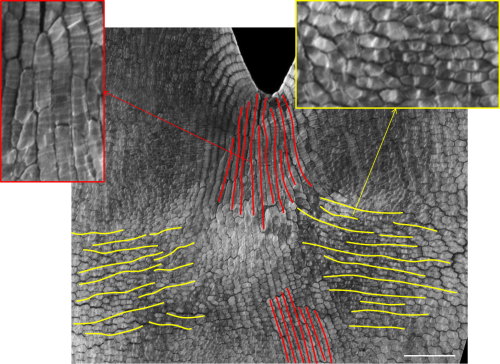
 (8 votes)
(8 votes)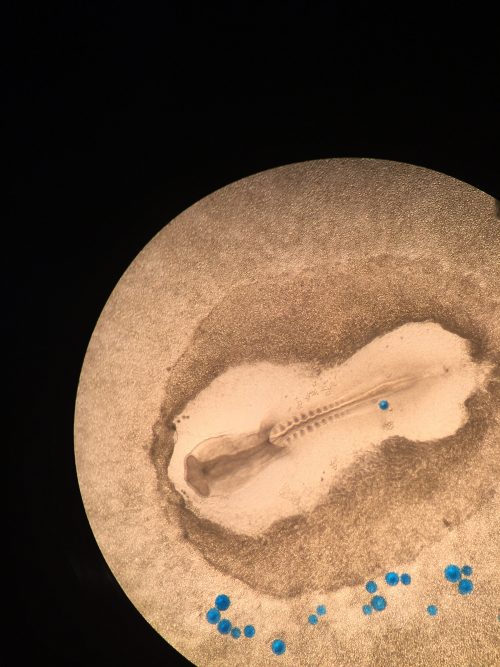
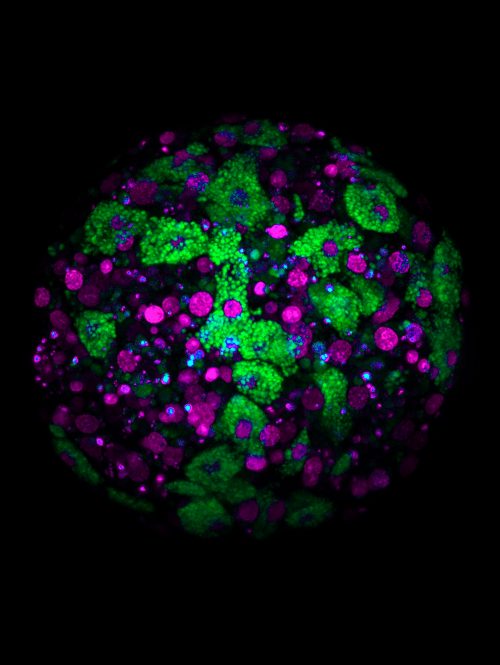
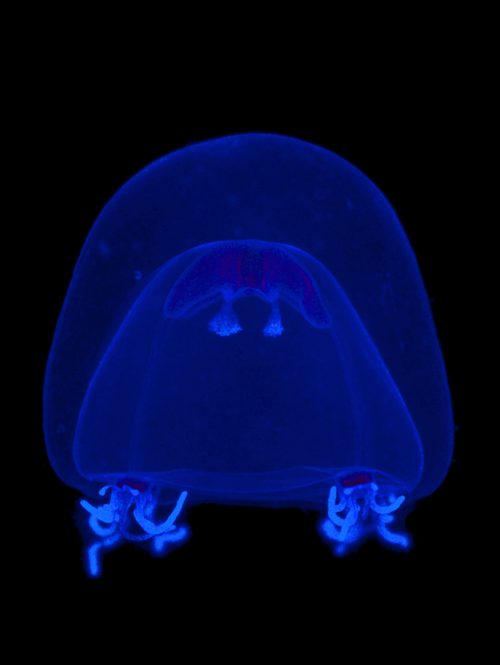
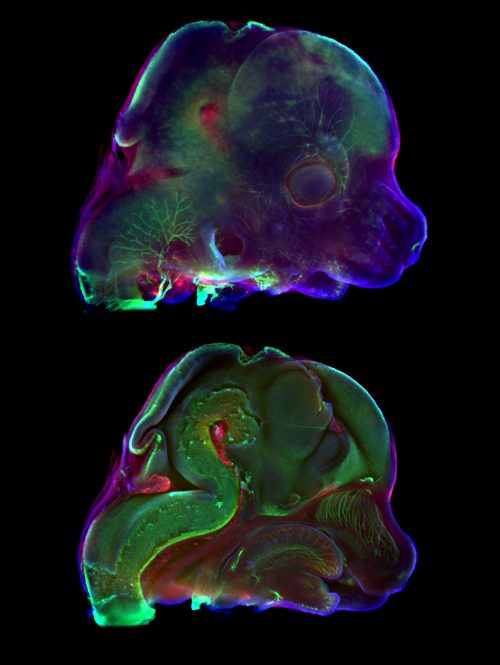
 (8 votes)
(8 votes)